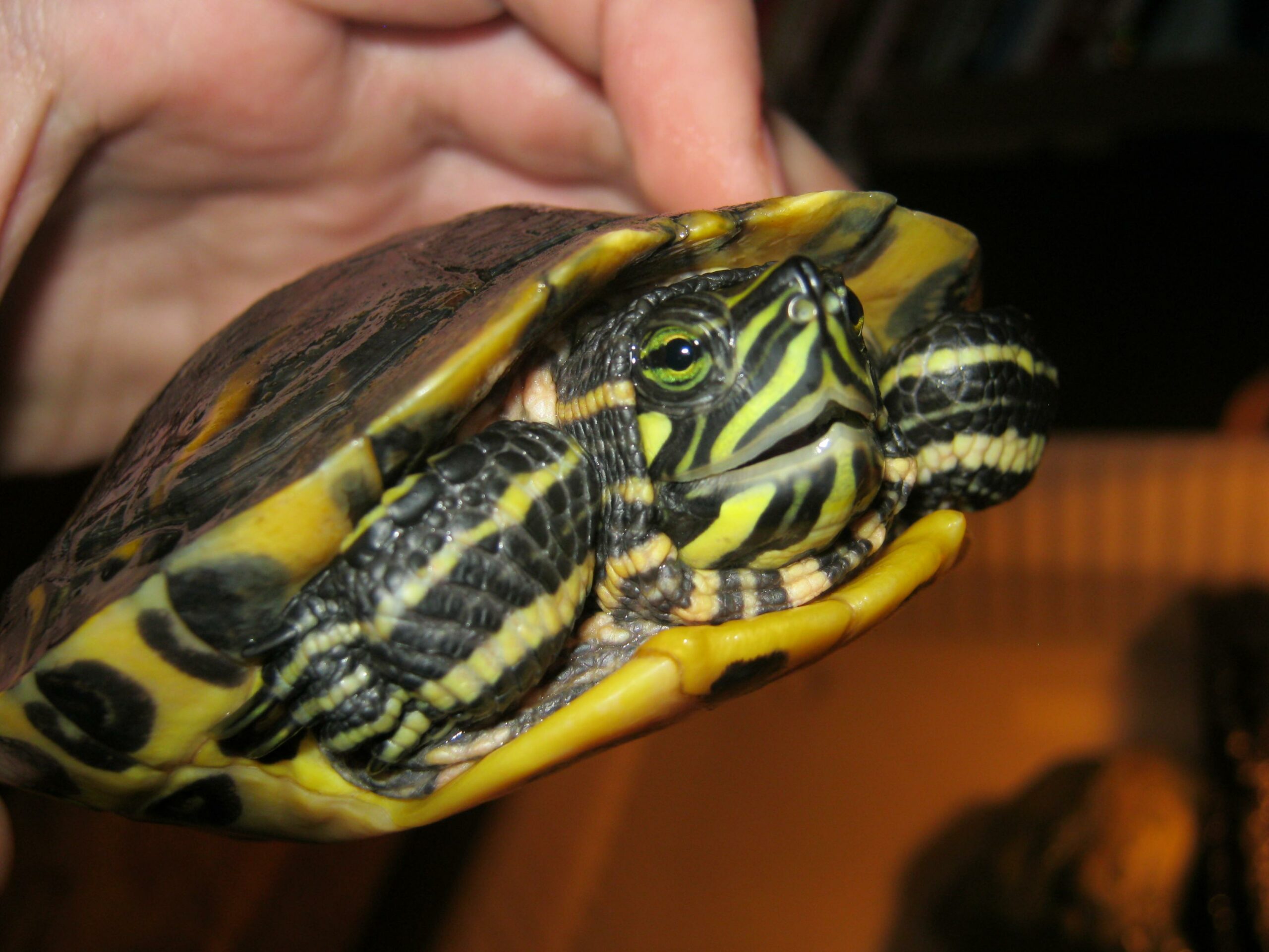The yellow-eared turtle belongs to the group of swamp and water turtles. It is also known as the yellow-eared slider and yellow-bellied turtle. The yellow stripes on the belly and head characterize their name.
Key Data
It is one of the most popular sea turtles and is widespread among enthusiasts. The older the Yellow-eared tortoise gets, the harder it is to distinguish it from the red-eared tortoise. At a young age, the coloring is particularly noticeable. The armored animals are cold-blooded. Your body temperature adapts to the environment.

Yellow-crested turtles are best kept in an aqua terrarium, also known as a paludarium. Here the aquarium is combined with the terrarium. Turtles spend most of their lives in the water. She rarely leaves this one. Therefore, this area should be sufficiently large.
A 400-liter tank is a minimum. There must be a suitable land area in the aqua terrarium for the reptiles to sunbathe regularly. A size of about 0.5 square meters is recommended. If you keep sexually mature females, the soil should be designed with a sand-earth mix that is suitable for digging. In late spring and summer, the yellow-cheeked slider turtle can move to the garden pond. The water there should be at least 20 degrees.
In its youth, the yellow-crested turtle feeds omnivorously. It eats animal and vegetable food alike. With increasing age, the proportion of animals decreases more and more. Older animals eat mostly vegetarian food.
Gender Differences
The reptiles are among the larger aquatic turtles. Males reach a shell length of almost 20 centimeters. Females are slightly larger with a shell length of up to 30 centimeters. If you are considering keeping a yellow-crested turtle, you should consider the animals’ needs before you buy one.
Males are definitely solitary, but females may be able to be kept in a small group. If you are not breeding, males and females should not share an aqua terrarium. The male would expose the female to great stress through his countless attempts to mate.
Determining the sex of the yellow-crested turtle is not easy. Juveniles in particular are difficult to tell apart. So you should wait until the tortoise is fully grown. The most striking feature is probably the long claws of the males. These are much longer than those of the females.
In addition, the anal opening in males is far from the edge of the carapace. In female animals, this can be found almost under the carapace. The male’s tail is thicker and longer than the female’s. The shape of the carapace also shows which gender it is. Males have a rounded or inward-facing carapace; female turtles have a convex carapace. To find out the sex, the animals should never be turned over.
Breed
The yellow-eared slider is an invasive species. If a keeper gets tired of his turtle, it may be abandoned. Sometimes this happens so often that the yellow-crested tortoise has already been found in the wild in Germany. It displaces other animal species and affects large parts of the flora.
For this reason, their marketing, keeping, and breeding in the European Union have been prohibited since August 2016. Livestock may be kept until the end of their lives. It must be ensured that they cannot multiply or break out.
Socialization

Yellow-crested turtles are usually solitary animals. They only meet at mating season. Two males should never be kept together in one aqua terrarium. This means unnecessary stress for the animals due to territorial fights and rivalries. The losing male would be attacked and bitten incessantly.
Keeping two females can work. They avoid each other for the most part. In order to be sure which sex the acquired animal shows later, a young animal should be purchased individually.
In principle, it would be possible to keep several females with one male. However, the eggs would have to be regularly removed from the clutch and destroyed. This form is only possible if there are several females. Otherwise, the female animals would be under constant stress from the courtship behavior of the male.
